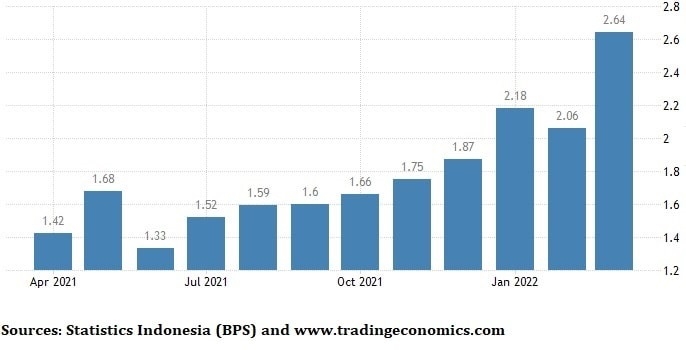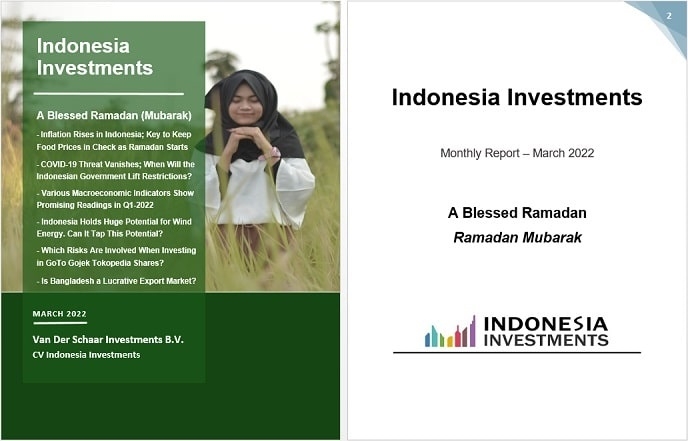Importance of Food Price Stability during the Ramadan & Idul Fitri Celebrations
With the Ramadan month just having started, it is important to take a look at food prices in Indonesia. The Ramadan-Idul Fitri period is typically a period when prices rise amid a significant increase in demand.
As we have emphasized before, too steep price growth is a major risk for Indonesia because there are not only 26.5 million Indonesians who live in poverty but also dozens of millions of households that live just above the poverty threshold. They are therefore in jeopardy of falling into full-blown poverty in case of (persistent) high inflation.
Moreover, in other parts of the world, inflation has already soared to multi-decade highs (such as in the United States and various European nations) amid high energy prices as a consequence of the Russo-Ukrainian war, billions worth of money that is pumped into economies by central banks in an effort to assist economic recovery, and the still somewhat instable supply-demand relation (characterized by disrupted logistics and distribution chains) amid rapidly rising demand in economies that are recovering from the COVID-19 crisis (while logistics and distribution systems seem to need some more time to return to full speed after the COVID-19 crisis).
So far, Indonesian inflation had been low over the past couple of years. However, in March 2022 we detected the first real signs of accelerating inflationary pressures in Indonesia. Based on the latest data from Statistics Indonesia (BPS), inflation reached the level of 0.66 percent month-on-month (m/m) in March 2022. Considering the month of March typically shows modest inflation only, with an average of about 0.10 percent (m/m) in the period 2018-2021, the March 2022 inflation figure is high.
Moreover, we assume March 2022 marks the beginning of a high inflation period for Indonesia that could continue for the next four months, especially now unsubsidized fuel prices are rising in Indonesia (for example, fully state-owned energy company Pertamina announced on 1 April 2022 that it raises Pertamax fuel prices by around 38 percent because of high global crude oil prices), and now the Ramadan-Idul Fitri period has arrived (which typically leads to a two or three-month period of peaking demand for a range of consumer goods, such as food products, drinks, and clothes).
Indonesian Headline Inflation Past 12 Months (Annual Percent Change):

In fact, in 2022 we may see Ramadan-Idul Fitri consumption back at levels normally seen in pre-COVID-19-crisis times. Based on the SurveySensum Ramadan Consumer Insight 2022, around 57 percent of respondents indicated that they plan to spend more money on consumer products during this year’s Ramadan month compared to last year, while only four percent of respondents indicated that they continue to save on expenses.
Rajiv Lamba, CEO of NeuroSensum & SurveySensum, stated that the findings in the 2022 census are in stark contrast to last year’s findings when respondents generally indicated that they were reluctant to spend in the context of Ramadan and Idul Fitri celebrations. For this census, around 1,500 respondents were interviewed in five big Indonesian cities and 1,000 respondents in Kuala Lumpur (in Malaysia). The census was started in 2019 with the aim to compare spending trends in the context of the Ramadan-Idul Fitri period from year-to-year.
[...]
This is the beginning of the article. Read the full article in our March 2022 report. This report can be ordered by sending an email to [email protected] or a message to +62.882.9875.1125 (including WhatsApp).
Price of this (electronic) report:
Rp 150,000
USD $10,-
EUR €10,-
Take a glance inside the report here!

